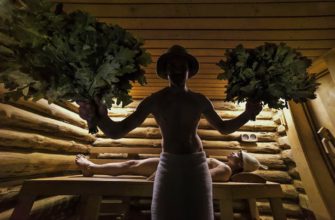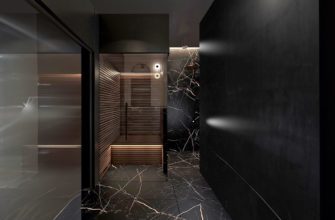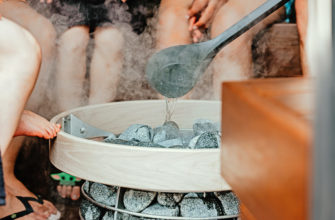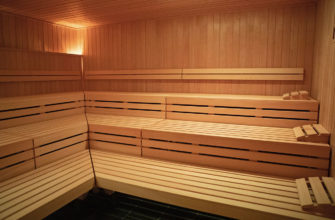The Finnish sauna, also known as a dry sauna, is a type of bath that has been an important part of Finnish culture and tradition for centuries. It is characterised by relatively high temperatures, which can reach 80 to 100 degrees Celsius, and low humidity, usually between 10 and 20%. The Finnish sauna helps to regenerate, cleanse the body of toxins, and improve well-being and health.
Building a Finnish sauna is a long-term investment that requires the right approach and the selection of the right materials. The choice of wood from which you decide to build your sauna is critical to its longevity. The right wood will not only look great, but will also be highly resistant to moisture, temperature and bacteria or fungi. In this article, we will introduce the most popular types of wood used in Finnish saunas, their advantages and disadvantages, as well as the factors that influence the choice of material. Finally, we will give you tips on how to maintain and care for the wood so that your sauna lasts as long as possible.
Popular types of wood used in Finnish saunas for walls
There are many different types of wood available on the materials market in Europe. Some of these are commonly used in saunas, while others are categorically unsuitable. Among the most commonly selected wood types for Finnish saunas are pine, lime, alder, aspen, cedar, fir and spruce.
However, not all types of wood are suitable for use in a Finnish sauna. For example, species such as oak or walnut, despite their durability and beautiful appearance, may not do well in a sauna due to their high content of tannins, which can emit when exposed to high temperatures and moisture, making it difficult to use the sauna. Or birch wood, for example, should only be used in dry saunas, as birch wood quickly begins to deteriorate when exposed to moisture.
In the following sections, we describe in detail the properties, advantages and disadvantages of the different types of wood we recommend for the Finnish sauna. In this article, we will not discuss woods that should not be used in the sauna. This will be a topic for another article.
Alder and thermo alder
Alder is a popular type of wood used in Finnish saunas. It is used both for panelling and for planks for benches. Alder has a pleasant, delicate smell and is resistant to moisture and temperature. In addition, alder is less susceptible to remaining traces of human sweat, which makes it easier to keep clean.
Thermo alder is a variety of alder wood that has undergone a special heat treatment process. As a result of this process, the wood becomes more durable, dimensionally stable and resistant to moisture, mould and fungi. Thermo alder, like other thermo-treated wood species, is slightly more expensive than its regular counterpart, but its superior properties make it worth considering for use in a Finnish sauna.
Both alder and thermo alder will work well as a material for panelling and benches, creating a comfortable and aesthetically pleasing sauna interior.
Advantages and disadvantages of alder
Advantages and disadvantages of thermo alder
Alder, due to its properties, is an excellent choice for the finish of the walls, ceilings and benches in the sauna. Thermo alder is particularly recommended as a material for the cooker surround and floor, thanks to its higher resistance to moisture and temperature.

Aspen and thermo aspen
Osika is another type of wood that is highly appreciated in Finnish saunas. Osika has a light, almost white colouring that adds a fresh and spacious feel to the sauna interior. It is used both for panelling and for bench boards. Aspen is renowned for its soft, delicate fragrance and high resistance to temperature and moisture fluctuations.
Thermo aspen is a version of aspen wood that has undergone a special thermal process. As a result, the wood gains better dimensional stability, greater durability and resistance to moisture, mould and fungi. Thermo aspen also differs from regular aspen in colour – it has a darker, more golden hue, which adds elegance and warmth to the sauna.
Aspen, especially in the thermo version, has excellent insulating properties, which contributes to maintaining the optimum temperature and humidity in the sauna. Its light colour and subtle fragrance create a welcoming atmosphere and at the same time, unlike some other types of wood, aspen does not leave visible sweat marks, making it easier to maintain hygiene in the sauna.
Advantages and disadvantages of aspen
Advantages and disadvantages of thermo aspen

As well as alder, aspen is an excellent choice for finishing walls, ceilings and sauna benches. Thermo aspen, due to its higher resistance to moisture and temperature, is particularly recommended as a material for the cooker surround and floor.
Linden
Although Linden is hardly used for sauna construction in Europe, it is a beautiful wood that has been used for centuries in the East, in Russian saunas. I predict that Linden will be widely used in the construction of modern Finnish saunas within the next five years.
Linden is one of the most recommended types of wood for use in Finnish saunas, especially when it comes to panelling and bench boards. Lime wood is characterised by its mild odour, good resistance to moisture and temperature, as well as its aesthetic appearance. Unlike white aspen wood, no yellow traces of human sweat remain on the surface of Linden, which means that Linden benches and wainscoting retain their appeal for a longer period of time.
Linden has a fine and uniform texture, making it easy to work with and install. Its properties make it ideal for both panelling and sauna benches, creating a cosy and comfortable atmosphere.
Advantages and disadvantages of Linden
Cedar
Cedar is a unique type of wood that can also be used in Finnish saunas. This species of wood is distinguished by its natural, intense aroma and beautiful appearance. Cedar is used both for panelling and for planks for benches.
One of the most important characteristics of cedar wood is its natural ability to neutralise unpleasant odours, giving the interior of the sauna a fresh and pleasant aroma. Cedar is also extremely resistant to moisture, mould and fungi, making it an ideal material for use in a Finnish sauna environment.
Cedar wood also has antibacterial and anti-allergenic properties, which contributes to maintaining hygiene and a healthy sauna environment. Due to its unique characteristics, cedar may be slightly more expensive than other wood species, but its investment will certainly pay off given its unique properties and longevity.
The aesthetics of cedar wood, with its warm hue and distinct grain, add a unique character and elegance to the sauna, making it an excellent choice for those who value not only functionality but also the unique look of the sauna interior.
Advantages and disadvantages of cedar

Pine and thermo pine
Although pine is one of the most accessible and inexpensive types of wood, ordinary pine is not recommended for use in Finnish saunas. Instead, consider using thermo pine, which becomes more resistant to sauna conditions through a special heat treatment process.
Pine can be used as construction wood or as floor wood.
Thermo-pine is slightly more expensive than aspen or Linden, but its higher price is due to its longer life span and better resistance to moisture, mould, fungi and human sweat. The thermal process makes pine wood more durable, dimensionally more stable and less susceptible to harmful agents. As a result, thermo pine is an excellent material for use in Finnish saunas.
It does not give off resin and can be used both on the walls and on the floor of the Finnish sauna.
Advantages and disadvantages of pine
Advantages and disadvantages of thermo pine
Spruce
Spruce is another type of wood that can be used in Finnish saunas, although it is not as commonly used as some of the previously mentioned species. It is mainly used for panelling, but can also be used for planks for benches, although it is not the most popular choice due to its properties.
Spruce wood is characterised by its light, bright colour and subtle, pleasant odour. It also has moderate moisture and temperature resistance, making it suitable for use in Finnish saunas, but it may require more care to maintain proper humidity conditions.
It is worth noting that spruce is not as resistant to mould, fungi or traces of human sweat as other wood species such as thermo-axe, alder or Linden. Therefore, when choosing spruce for bench boards or panelling, it is important to regularly ventilate the sauna, control the humidity level and take care to clean and disinfect the wood.
Compared to other types of wood, spruce may be more affordable, but it is worth considering its limitations when it comes to durability and resistance to the adverse conditions of a Finnish sauna.
Advantages and disadvantages of spruce

Spruce can be used as an alternative to pine when finishing sauna floors. However, when using spruce for benches and wall cladding, its greater tendency to crack and warp and the possibility of resin release should be taken into account.
I would not recommend using this wood in a sauna.
Factors influencing the choice of wood
- Moisture and temperature resistance. When choosing wood for your Finnish sauna, it is worth paying attention to its resistance to moisture and temperature. Some types of wood, such as thermo alder or thermo aspen, are better suited to sauna conditions than their regular counterparts.
- Resistance to bacteria and fungi. The wood used in the sauna should be resistant to bacteria and fungi. Some types of wood, such as cedar or alder, have a greater natural resistance to these factors than others.
- Aesthetics and appearance. The aesthetics of the wood are also important when choosing a sauna material. When choosing wood, it is worth paying attention to its shade, texture and any knots that may affect the appearance of the sauna interior.
- Scent and aromatic properties. Some types of wood, such as cedar or spruce, have a characteristic smell that affects the atmosphere in the sauna. It is advisable to choose a wood with a pleasant smell, but bear in mind that it may irritate the mucous membranes of some people.
- Availability and cost. Last but not least, the availability and cost of wood is an important factor in the choice of wood. It is worth paying attention to whether a particular type of wood is readily available in our region and what its prices are compared to other materials.
Tips for maintaining and caring for wood in the sauna
- Protection against moisture and temperature changes. The wood used in the sauna should be adequately protected against moisture and temperature changes. It is worth investing in specialised wood preservatives and oils to protect the surface from deterioration.
- Cleaning and disinfection. Regular cleaning and disinfection of the sauna wood is essential to maintain hygiene and prolong the life of the material. It is advisable to use mild, specialised cleaners designed for wood and to remember to ventilate the sauna after each use.
- Appropriate impregnation of wood. Impregnating wood with specialised products prolongs its life, increases its resistance to moisture, temperature and fungi and bacteria. The state of impregnation should be checked regularly and replenished if necessary.
- Regular ventilation and humidity control. Ventilating the sauna after each use is essential to maintain the right humidity and prevent the growth of mould and fungus. Controlling the humidity with a hygrometer will maintain optimum conditions for the wood and sauna users.
Summary
The final choice of wood for a Finnish sauna depends on individual preferences and budget constraints. It is worth considering the availability and cost of different types of wood, as well as their properties, such as moisture and heat resistance or aesthetics. Don’t buy unfamiliar wood from a builder’s shop, but rather go to a professional sauna building materials shop, where you will be consulted and can build the perfect sauna.










